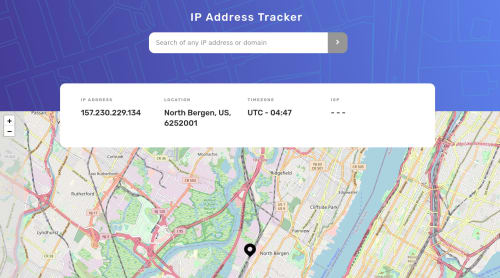Ip address tracker

Solution retrospective
Ooops... I forgot border-right and I don't understand where is ISO(Internet provider?) in Geoapify APIs. If someone gives a hint, I'll be very grateful.
Please log in to post a comment
Log in with GitHubCommunity feedback
- @Asfer-dev
The ISP information is in the following format in the data object:
"as": { "name": "xyz", ... }You can access it in your component like this:
data.as.nameHope it works.
I couldn't get my map to work properly for some reason. It sets to the user's location when the user loads the website, but I can't get it to work for any other IP Addresses that the user enters.
Great work tho!
Join our Discord community
Join thousands of Frontend Mentor community members taking the challenges, sharing resources, helping each other, and chatting about all things front-end!
Join our Discord